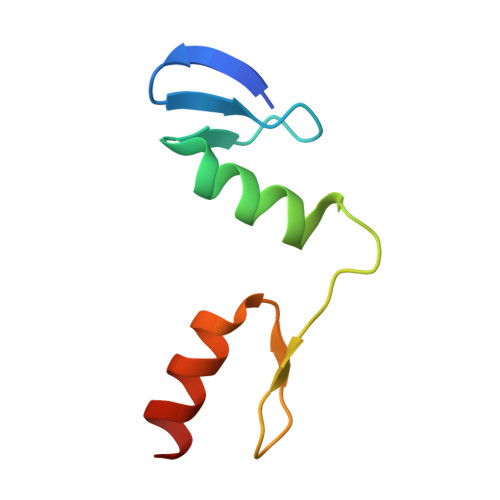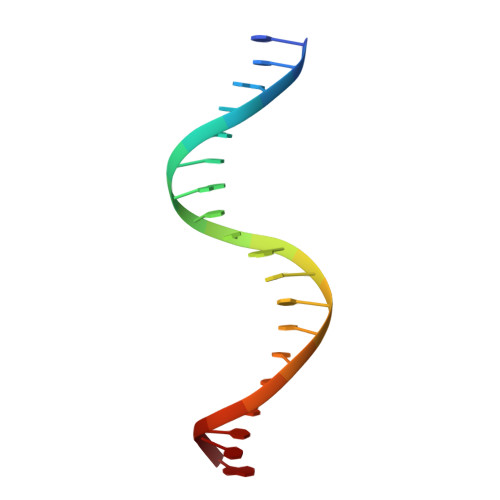The crystal structure of a two zinc-finger peptide reveals an extension to the rules for zinc-finger/DNA recognition.
Fairall, L., Schwabe, J.W., Chapman, L., Finch, J.T., Rhodes, D.(1993) Nature 366: 483-487
- PubMed: 8247159
- DOI: https://doi.org/10.1038/366483a0
- Primary Citation of Related Structures:
2DRP - PubMed Abstract:
The Cys2-His2 zinc-finger is the most widely occurring DNA-binding motif. The first structure of a zinc-finger/DNA complex revealed a fairly simple mechanism for DNA recognition suggesting that the zinc-finger might represent a candidate template for designing proteins to recognize DNA. Residues at three key positions in an alpha-helical 'reading head' play a dominant role in base-recognition and have been targets for mutagenesis experiments aimed at deriving a recognition code. Here we report the structure of a two zinc-finger DNA-binding domain from the protein Tramtrack complexed with DNA. The amino-terminal zinc-finger and its interaction with DNA illustrate several novel features. These include the use of a serine residue, which is semi-conserved and located outside the three key positions, to make a base contact. Its role in base-recognition correlates with a large, local, protein-induced deformation of the DNA helix at a flexible A-T-A sequence and may give insight into previous mutagenesis experiments. It is apparent from this structure that zinc-finger/DNA recognition is more complex than was originally perceived.
Organizational Affiliation:
MRC Laboratory of Molecular Biology, Cambridge, UK.

















